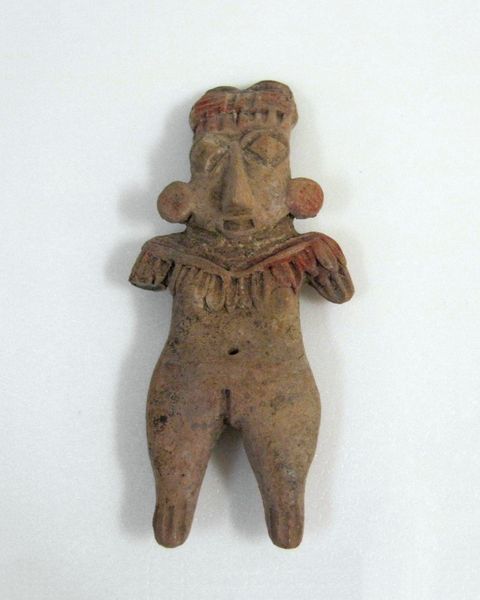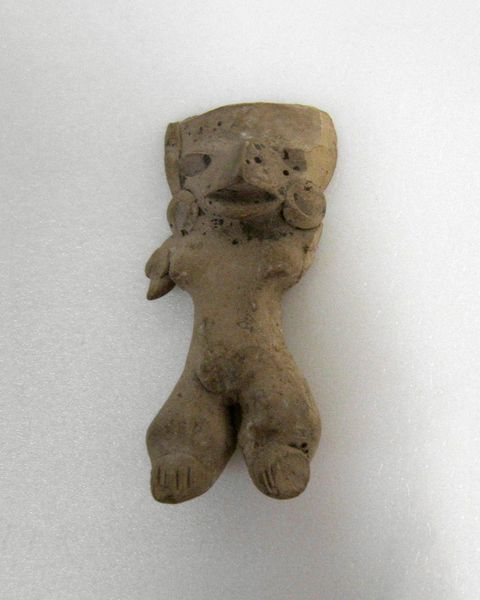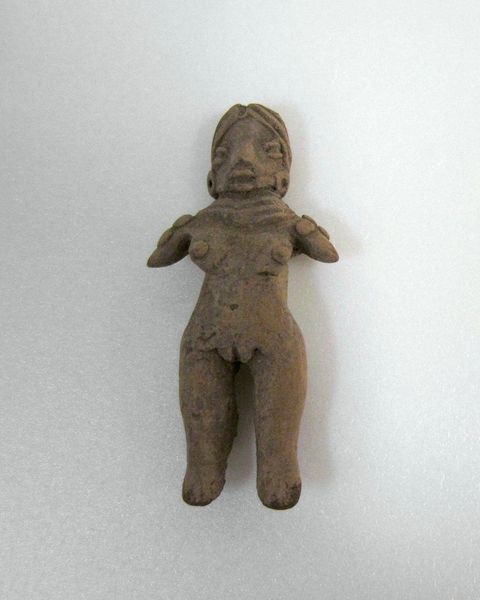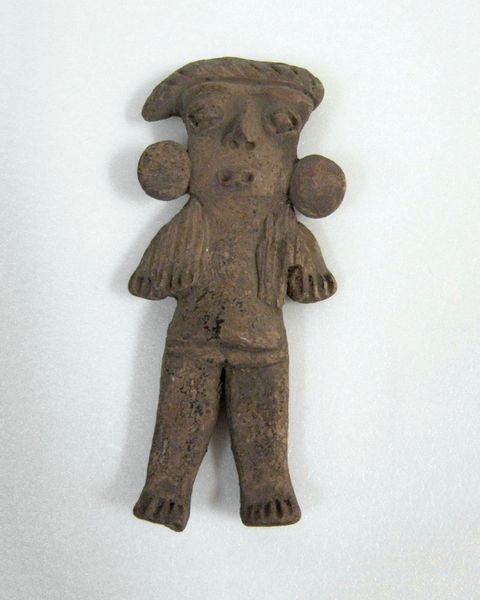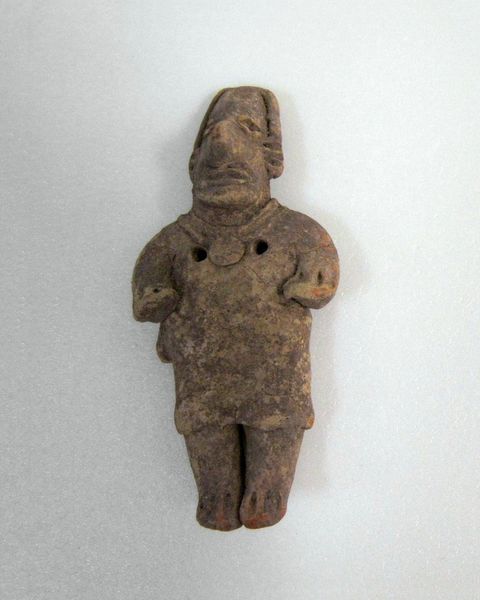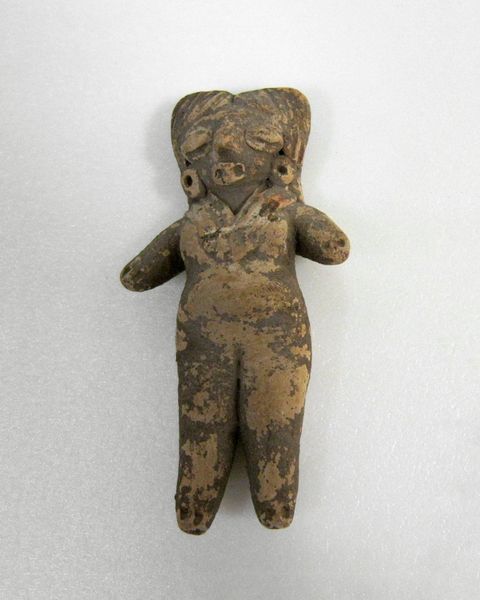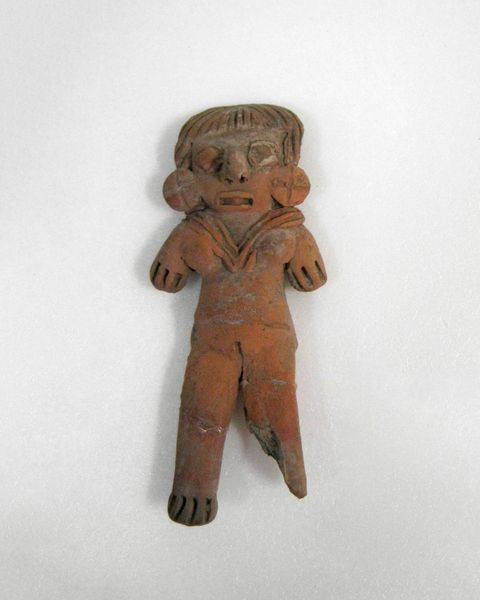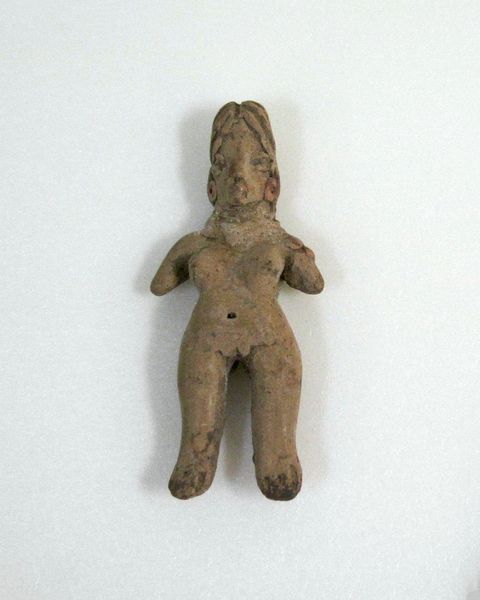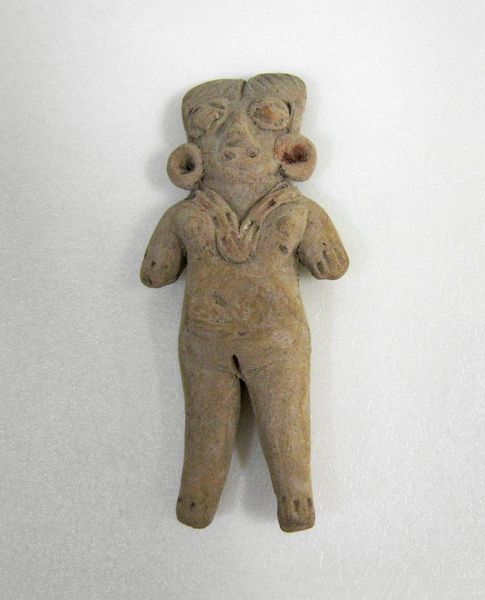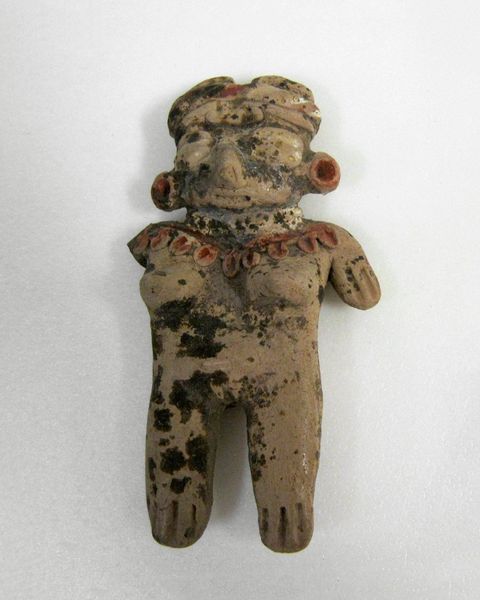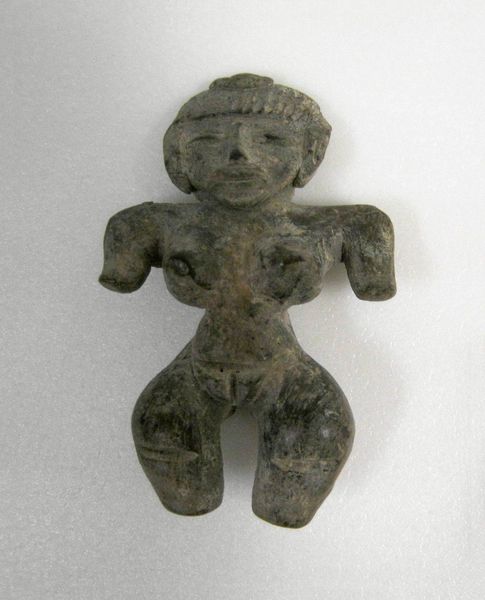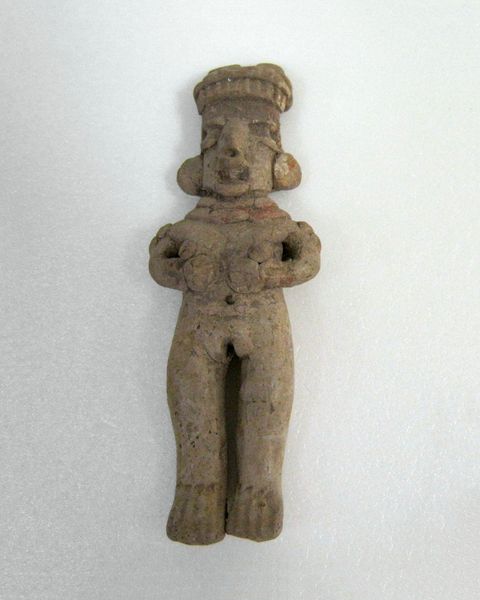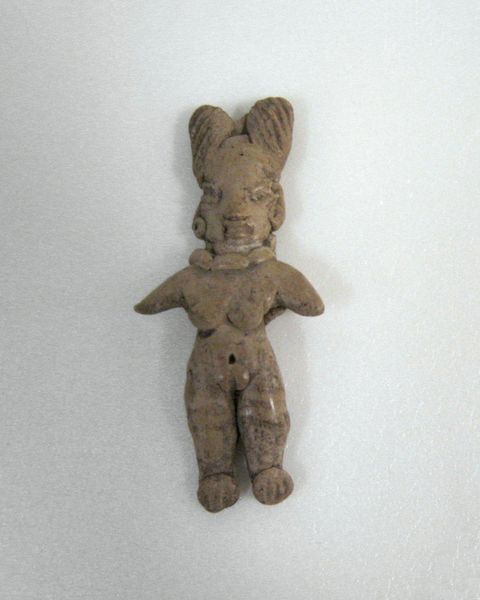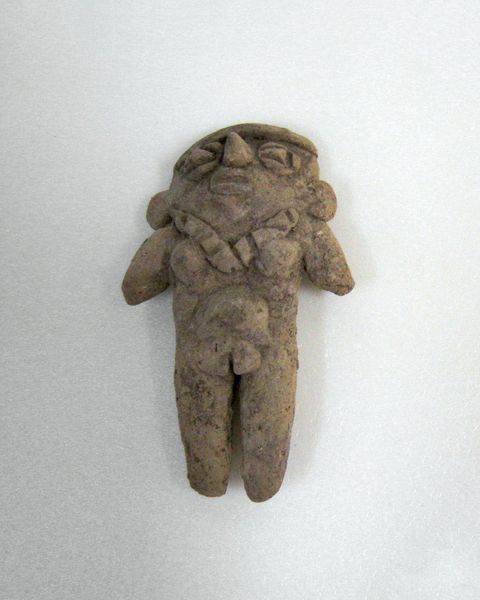
earthenware, sculpture
#
sculpture
#
figuration
#
earthenware
#
sculpture
#
indigenous-americas
Dimensions: 3 3/4 x 2 x 3/4 in. (9.5 x 5.1 x 1.9 cm)
Copyright: Public Domain
Curator: Let’s explore this earthenware figure, titled "Standing female figure," created by the Michoacan people sometime between 200 and 700 AD. What strikes you about her? Editor: The figure has such a grounded, almost stoic presence. The earth-toned clay and simplified form convey a sense of strength, but it also feels incredibly vulnerable because the figure appears nude. I wonder how people living at the time this was made interpreted it? Curator: Exactly. Let's think about this nudity not through a modern lens, but considering what it might signify within its own cultural context. How do you think the figure's nudity relates to the portrayal of identity, gender, and societal values within the Michoacan culture? Editor: Maybe it was a normal thing to be nude? The lack of adornment implies a focus on the body's natural state rather than on status or constructed identity. Curator: Perhaps, but how can we read it beyond its immediate physical presence? The female body has historically been a site of social and political negotiation. Does her very deliberate presentation speak to specific roles or perhaps challenges of women during that time? Editor: So, it could be read not as a portrait of everyday life, but more as an ideological representation, reflecting both the power and potential vulnerability of women in their society? Curator: Precisely. Considering the archaeological context it was found in, alongside other artifacts, could unveil whether this figurine was created for burial rituals, agricultural fertility ceremonies, or didactic representations. Editor: I never thought about pre-colonial figures through the lens of modern social critique, such as identity or politics, I thought these elements began with modernity. Thank you, I will rethink my assumptions when analyzing artifacts. Curator: Absolutely, this intersectional analysis helps broaden our comprehension and appreciation for pre-colonial artistic expression.
Comments
No comments
Be the first to comment and join the conversation on the ultimate creative platform.
